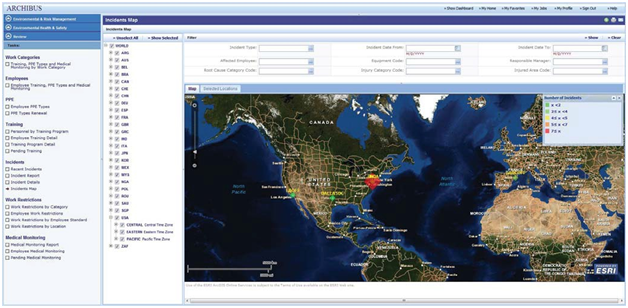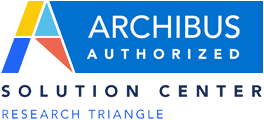A recent study released by the Massachusetts Institute of Technology (MIT) and the Boston Consulting Group, which surveyed more than 4,000 managers from 113 countries, concluded that sustainability is at a tipping point. A majority of survey respondents said sustainability is on their organizations’ agenda, and 67% said that sustainability was necessary for being competitive in today’s marketplace. This 67% response rate is up 12 percentage points, versus 55% reported in a similar study conducted a year earlier.
Applications within the ARCHIBUS Environmental & Risk Management domain were designed to accomplish two complementary goals: 1) improve environmental sustainability efforts, and 2) reduce risk to the organization.
ARCHIBUS applications that deliver sustainability capabilities to help achieve assessment, planning, and performance management targets include:
- Environmental Sustainability Assessment — prioritizes sustainability projects and measures performance indicators to achieve environmental goals
- Energy Management — tracks and manages energy use across a facility portfolio to control costs and reduce carbon footprint
- Green Building — assists in calculating carbon footprint and achieving environmental sustainability certification goals for individual buildings or across an entire portfolio
- Waste Management — tracks and reports on waste streams to assess and improve the effectiveness of waste reduction and recycling programs
ARCHIBUS applications that support risk mitigation to help ensure business continuity and avoid hazards that may result in regulatory and/or legal action include:
- Emergency Preparedness — ensures business continuity and expedited recovery in the event of a disaster
- Compliance Management — proactively manages complex compliance requirements to ensure safe work environments and reduce administrative burdens
- Clean Building — streamlines the time-consuming and highly-regulated process of identifying and abating indoor environmental hazards
- Environmental Health & Safety — provides control over workplace safety incidents, personal protective equipment (PPE), training, medical monitoring, and work restrictions
- Material Safety Data Sheets — retrieves material safety and inventory information quickly to help protect individuals from hazardous chemicals and reduce regulatory compliance costs
- Waste Management — provides the closed-loop process in monitoring waste streams from generation through disposition to minimize health and regulatory risk

ARCHIBUS Environmental & Risk Management applications provide a structured repository for all relevant data and can display maps or floor plans showing affected locations, with drill-down functionality to view detailed information
These ARCHIBUS Environmental & Risk Management applications provide the informational framework needed to successfully manage sustainability programs as well as mitigate risk among the organization’s varied stakeholders, including employees, customers, regulatory agencies, non-governmental organizations, or investors. But more importantly, promoting environmental stewardship while mitigating risk can help improve an organization’s brand equity and increase overall stakeholder value.
